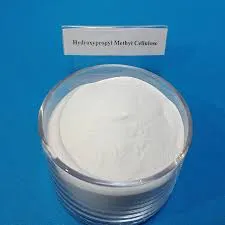
Dec . 13, 2024 13:51 Back to list
Innovative Approaches to HPMC Dispersion for Enhanced Material Performance
Understanding HPMC Dispersion Applications and Benefits
Hydroxypropyl Methylcellulose (HPMC) is a versatile and essential polymer used extensively in various industries, particularly in construction, pharmaceuticals, and food manufacturing. This compound is derived from cellulose, a natural polymer from plant cell walls, modified to enhance its functional properties. One of the most critical characteristics of HPMC is its ability to form stable dispersions in aqueous environments, making it invaluable in numerous applications.
Properties of HPMC
HPMC is known for its solubility in cold water, which allows it to create a viscous dispersion without the need for heat. This property is essential in many applications where heat-sensitive ingredients are involved. The polymer is available in various grades, with modifications in its hydroxypropyl and methyl content, which dictate its viscosity, solubility, and binding properties. The chemical structure of HPMC contributes to its stability and resistance to changes in temperature and pH, making it a reliable choice for diverse applications.
Applications in Construction
In the construction industry, HPMC is primarily used in cement-based products like mortar, tile adhesives, and plasters. The addition of HPMC to these mixtures significantly improves their workability, adhesion, and retention of water. This is particularly important because adequate water retention ensures proper curing of cement, leading to enhanced strength and durability of the finished product. Moreover, HPMC contributes to the slip resistance of these materials, allowing for easier application while maintaining the desired structural integrity.
Pharmaceutical Uses
hpmc dispersion

The pharmaceutical sector utilizes HPMC for its binding, thickening, and coating properties. It serves as a disintegrant in tablet formulations, helping to ensure that the tablets dissolve properly in the gastrointestinal tract. Additionally, HPMC is an essential ingredient in controlled-release formulations, where it regulates the release of active ingredients over time. Its biocompatibility makes it suitable for use in various drug delivery systems, including hydrogels and films.
Food Industry Applications
In the food industry, HPMC acts as a thickening agent, emulsifier, and stabilizer. It enhances the texture and mouthfeel of many products, ranging from sauces and dressings to baked goods and dairy products. HPMC’s water-holding capacity prevents syneresis (the separation of liquid) in items like puddings and jellies, improving shelf life and consumer satisfaction. Importantly, HPMC is considered a vegetarian alternative to gelatin and is widely used in vegan products.
Environmental Considerations
With growing concerns about sustainability, HPMC offers an environmentally friendly option compared to synthetic polymers. As a cellulose derivative, it is biodegradable and can be produced from renewable resources. This characteristic aligns with the increasing demand for sustainable materials in various industries and supports the shift towards greener practices.
Conclusion
HPMC dispersion is a remarkable innovation that serves multiple industries with its unique properties and functionalities. From enhancing construction materials to improving pharmaceutical formulations and food products, HPMC is integral to modern manufacturing processes. Its versatility, combined with environmental sustainability, positions it as a key player in evolving industry standards. As industries continue to demand high-performance and eco-friendly materials, HPMC's role will likely expand, paving the way for innovative applications that benefit both producers and consumers alike. Embracing HPMC dispersion can lead to advanced solutions that meet contemporary challenges while promoting a sustainable future.
-
Versatile Hpmc Uses in Different Industries
NewsJun.19,2025
-
Redispersible Powder's Role in Enhancing Durability of Construction Products
NewsJun.19,2025
-
Hydroxyethyl Cellulose Applications Driving Green Industrial Processes
NewsJun.19,2025
-
Exploring Different Redispersible Polymer Powder
NewsJun.19,2025
-
Choosing the Right Mortar Bonding Agent
NewsJun.19,2025
-
Applications and Significance of China Hpmc in Modern Industries
NewsJun.19,2025







